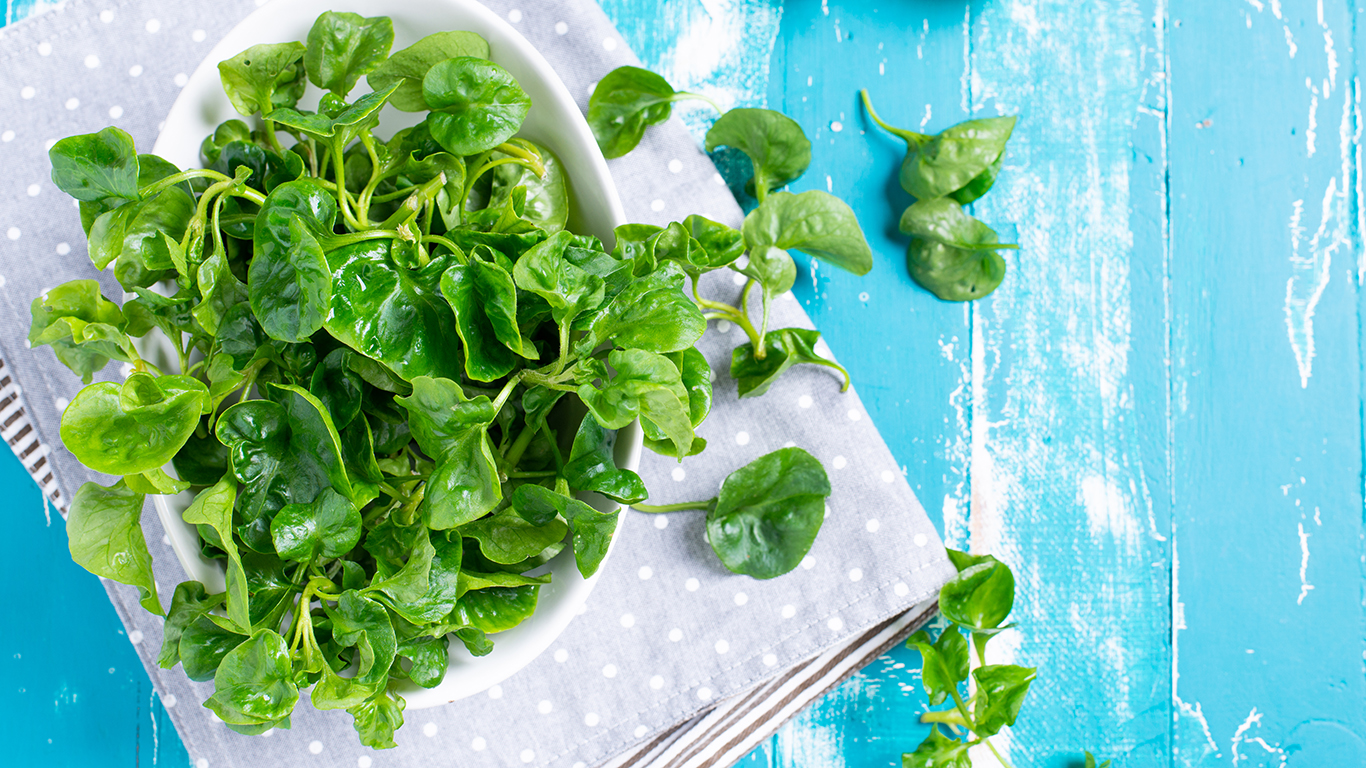
The Oxford English Dictionary defines “superfood” as “a food considered especially nutritious or otherwise beneficial to health and well-being” — though, amusingly, the first printed use of the term it records, from 1915 in the Daily Gleaner from Jamaica, applies the term not to food at all but to wine.
Today, the term is freely applied to a wide range of fruits and vegetables (and sometimes seafood), with interest in the concept really taking off about half a dozen years ago. A Google search for the term returns more than 250 million results.
The commonly accepted view of superfoods — which might include anything from pomegranates and açaí berries to beets to cocoa — is that eating enough of them will protect you from all kinds of ills. Indeed, studies of the compounds found in many of these foods (including the antioxidants called anthocyanins, omega-3 fatty acids, and beta-carotene) suggest that they really can have salutary results.
Click here for spring superfoods that won’t break the bank.
However, it is important to remember that laboratory studies don’t necessarily translate to real life, and that in many cases, to profit from the beneficial compounds in foods, it would be necessary to consume them daily, and in amounts so large as to be impractical.
As long as consumers have a realistic view of superfoods, of course, and don’t expect miracles, eating these nutrient-rich items, as part of a balanced diet, is a great idea.
Many things hailed as superfoods — for instance, fiddlehead ferns, stinging nettles, ramps, purslane, and kelp — are pricey and/or difficult to find. On the other hand, plenty of common fruits and vegetables fit the definition, in the sense that they are full of vitamins, minerals, and other nutrients.
Some of these first appear in spring each year, or are at their best this season — and they’re as easy on your wallet as they are good for your health.
Prices are primarily simple weighted average prices for non-organic produce as given by the United States Department of Agriculture’s National Retail Report for specialty crops for the seven-day period ending March 7. Prices for items not covered in the report were sourced from Walmart, by far the country’s largest grocery retailer, or ShopRite, a supermarket cooperative with more than 250 units in six eastern states. Note that produce prices change constantly according to weather conditions and other factors and that prices will vary from region to region.

Artichokes
> Price: $2.11 each
This edible thistle is an excellent source of dietary fiber, as well as Vitamin C, Vitamin K (the so-called “blood-clotting vitamin” and an important factor in bone health), folate (a form of Vitamin B9, important for cell growth and to prevent some birth defects), and manganese (considered an essential nutrient, with many uses).
[in-text-ad]

Asparagus
> Price: $2.16/lb.
Notorious for the strong odor it imparts to the urine of those who eat it (or at least some of those — there are some 871 genetic alterations that blunt the effect for many others), this edible member of the lily family is considered one of the most nutritionally balanced of all vegetables. A five-ounce portion provides 60% of the Recommended Dietary Allowance (RDA) for folic acid (a synthetic form of folate), along with plenty of potassium — an important electrolyte that aids the proper functioning of the heat, kidneys, muscles, and nerves — and other minerals and vitamins.
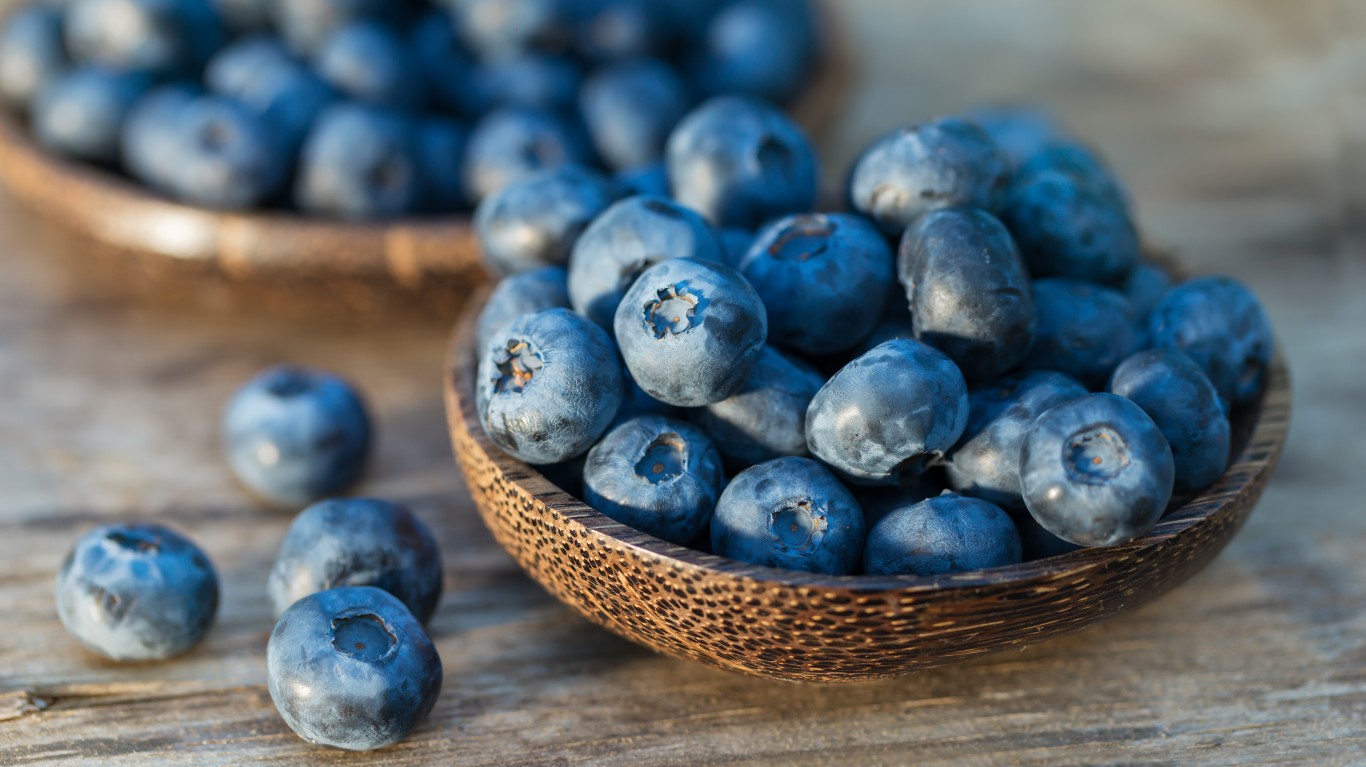
Blueberries
> Price: $2.78/pint
One of everybody’s favorite “superfoods,” since they’re widely available, easy to eat, and tasty, blueberries have more antioxidants — compounds that can help protect the body from free radicals, which are unstable molecules that can cause cell damage — than almost any other common fruit or vegetable. They contain elements that may also help lower blood pressure, prevent heart disease and diabetes, and improve memory and brain function.
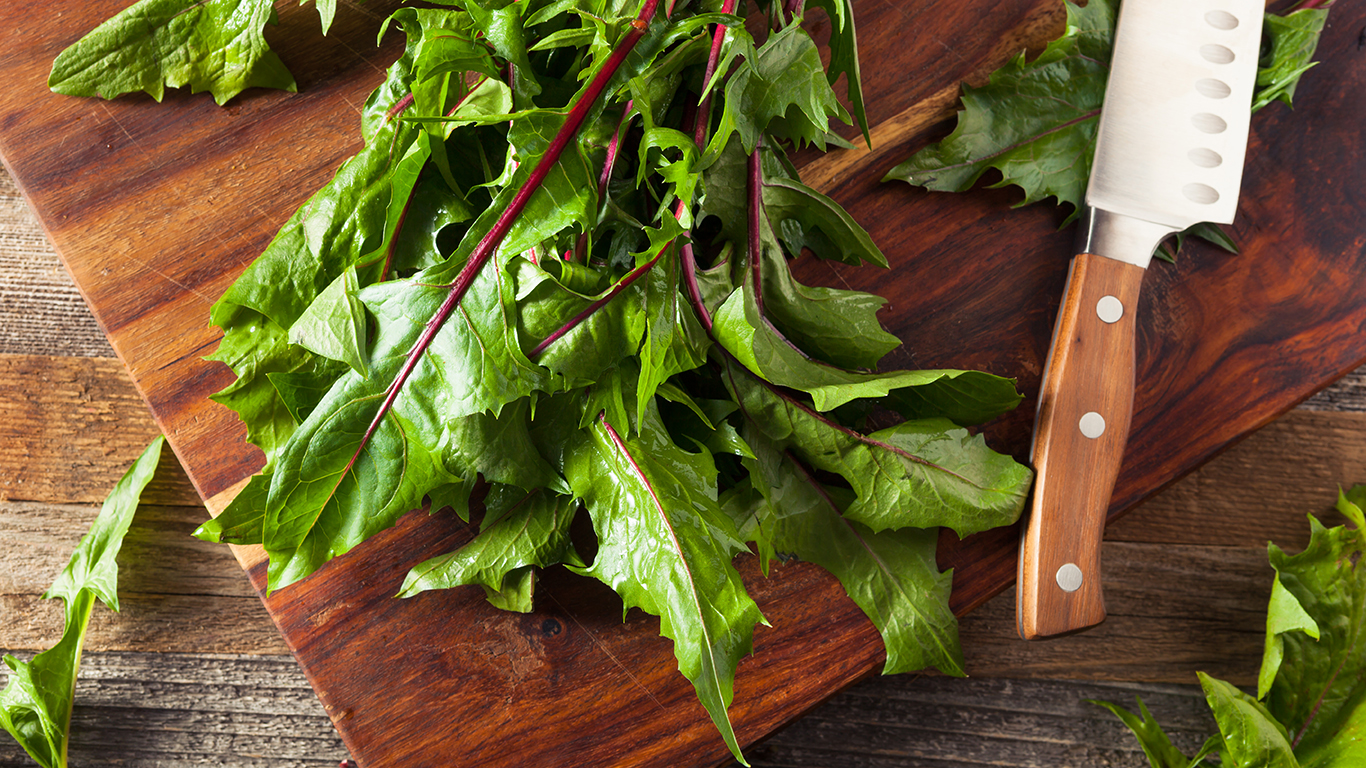
Dandelion greens
> Price: $1.99/lb.
Somebody once said “A weed is a plant that nobody has found a use for yet.” Spiky-leaved, with yellow flowers and furry-looking seed heads, dandelions grow wild on roadsides (among other places) all over America — but they’re one weed people have found a use for — eating — for centuries. Cooked as greens, added to soups, or tossed in salads, dandelions provide bitterish flavor and a whole host of apparent health benefits. Containing a veritable cocktail of vitamins and minerals — principally Vitamins A, C, and K, plus iron, calcium, magnesium, and potassium — they’re a diuretic (the French call them “pissenlit,” literally pee in bed) and a laxative, and have traditionally been used to treat everything from upset stomach to joint and muscle aches to eczema.
[in-text-ad-2]
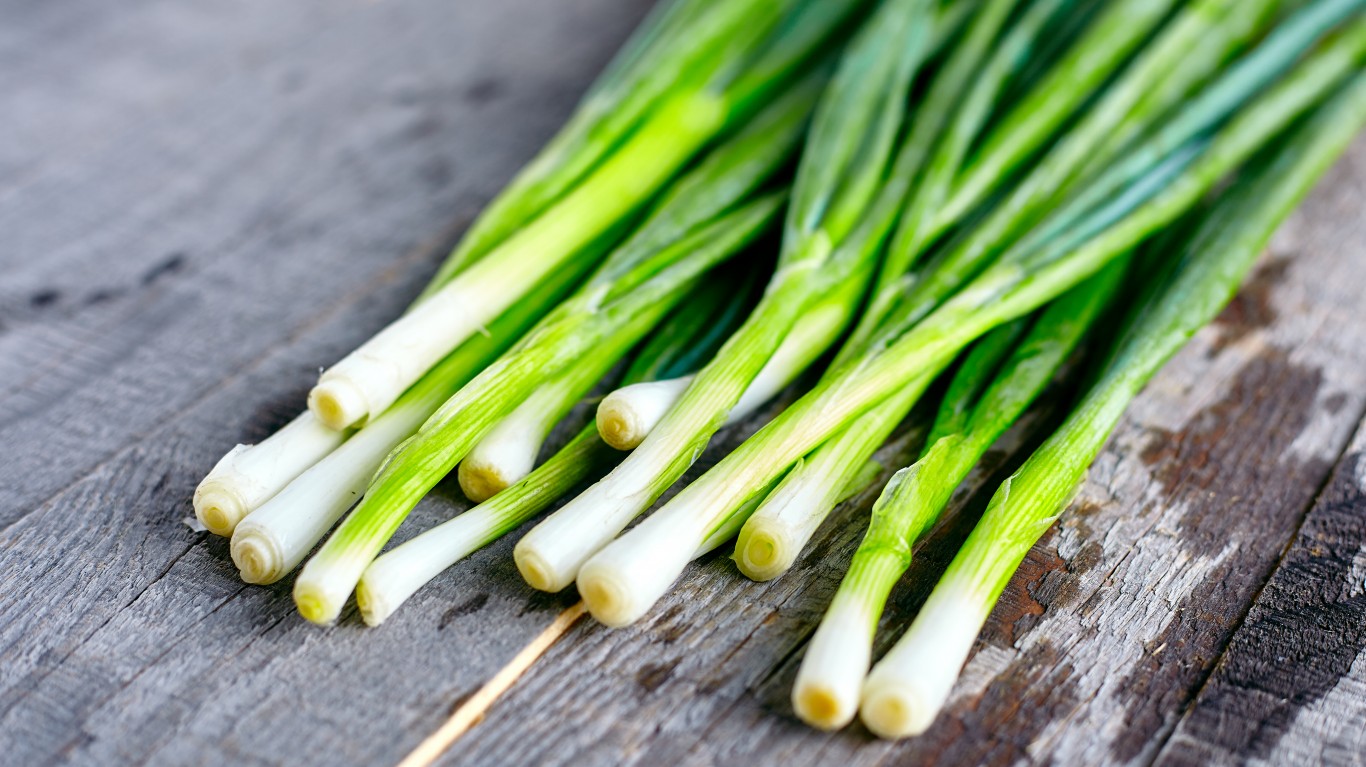
Green onions (scallions)
> Price: $0.58/bunch
Green onions (or scallions) are rarely eaten as a vegetable on their own — though in Mexico, they’re sometimes grilled as an accompaniment to steak or fajitas — but adding plenty of them to salads, soups, stews, and other dishes will provide a healthy dose of dietary fiber and Vitamins A, C, and K, as well as some thiamin (Vitamin B1 — essential for a healthy metabolism and cell growth and function), folate, magnesium, and other minerals.

Leeks
> Price: $4.99/bunch
A cup of cooked fresh leeks provides almost a third of the RDA for Vitamin K (for blood and bone health). They also contain folate and flavonoids (especially kaempferol, which studies show might help regulate cancer cells), as well as other compounds good for cardiovascular health.
[in-text-ad]
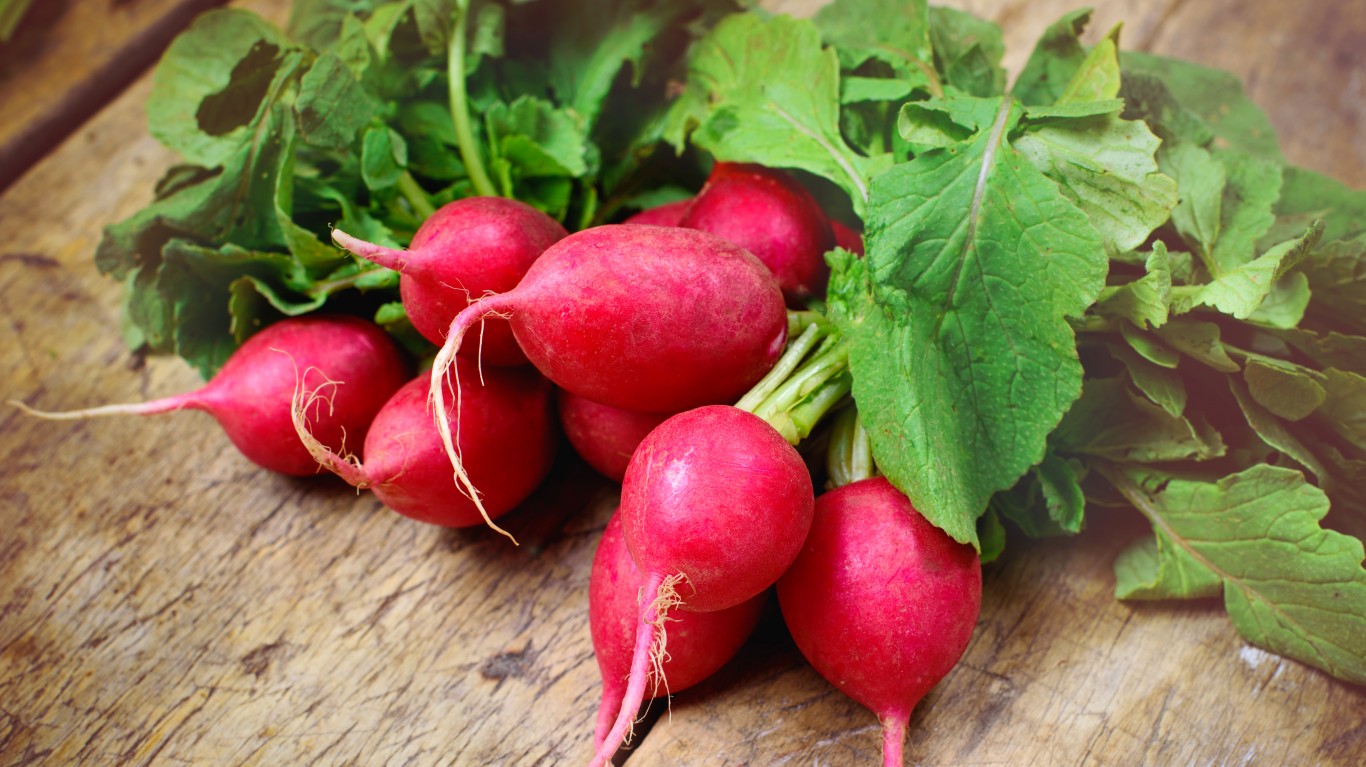
Radishes
> Price: $0.47/bunch
These spicy little red- or pink-and-white root vegetables — popular in salads, and a good snack for the health-conscious — are one of the first spring crops to come up. They’re a good source of fiber, Vitamin C, folate, and potassium, as well as riboflavin (or Vitamin B2, important for energy production, cell growth, and the metabolism of fats and drugs) and other vitamins and minerals.

Rhubarb
> Price: $2.99/lb.
These sour stalks, which look like overgrown red celery, are a vegetable usually treated as a fruit — typically sweetened and baked into pies (often in combination with strawberries) or other desserts. Its nutritional value is primarily as fiber, though a 3.5-ounce serving offers roughly a third of the RDA for Vitamin K. It also contains proanthocyanidins, the same antioxidants that may provide some of the supposed health benefits of red wine and cocoa.
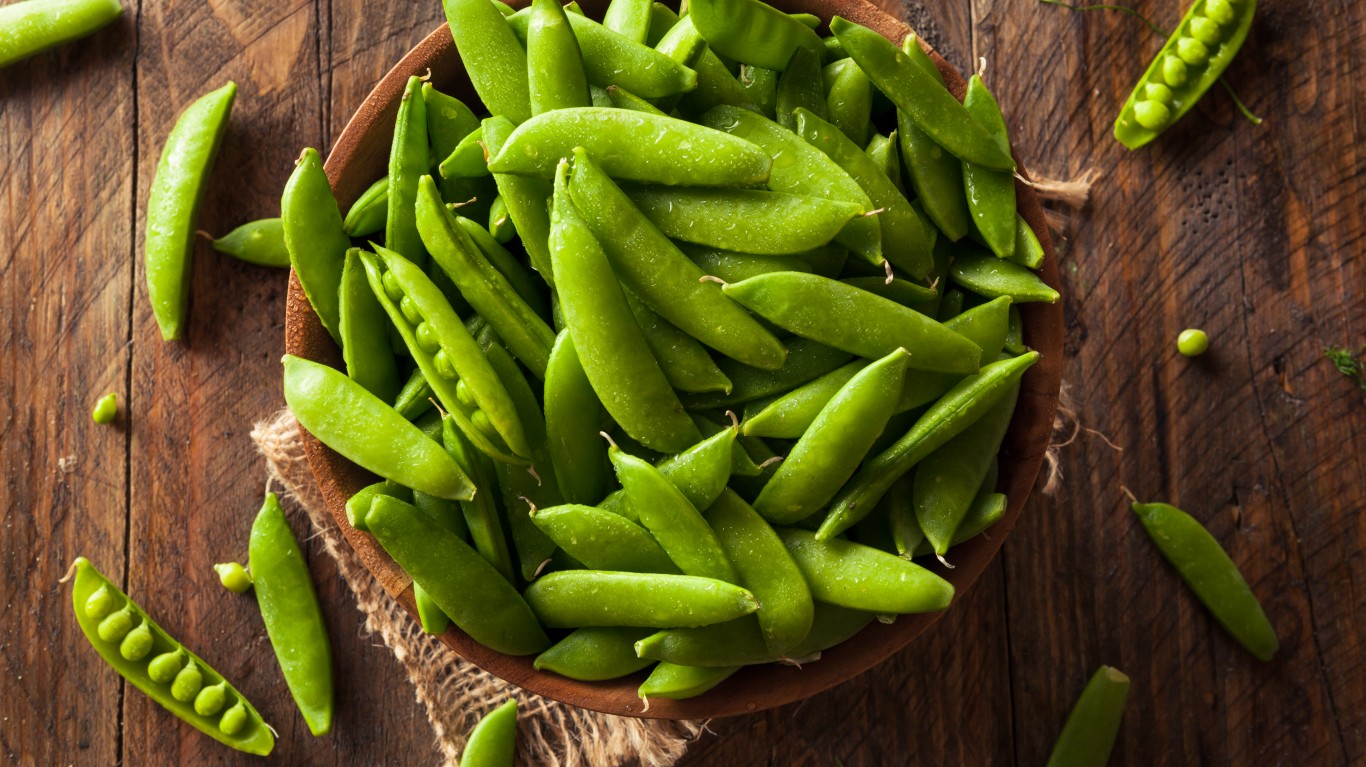
Snow peas
> Price: $4.96/lb.
Snow peas, like their close cousin sugar snap peas, are substantially lower in starch (and thus carbs) than regular English or garden peas. They’re very high in Vitamin C — a 3.5-ounce serving provides 100% of the RDA — and have plenty of Vitamins A and Ks well. They contain other antioxidants and are rich in fiber (because you eat the hulls as well as the peas themselves), which promotes dietary health and may be beneficial for blood sugar control and weight loss.
[in-text-ad-2]
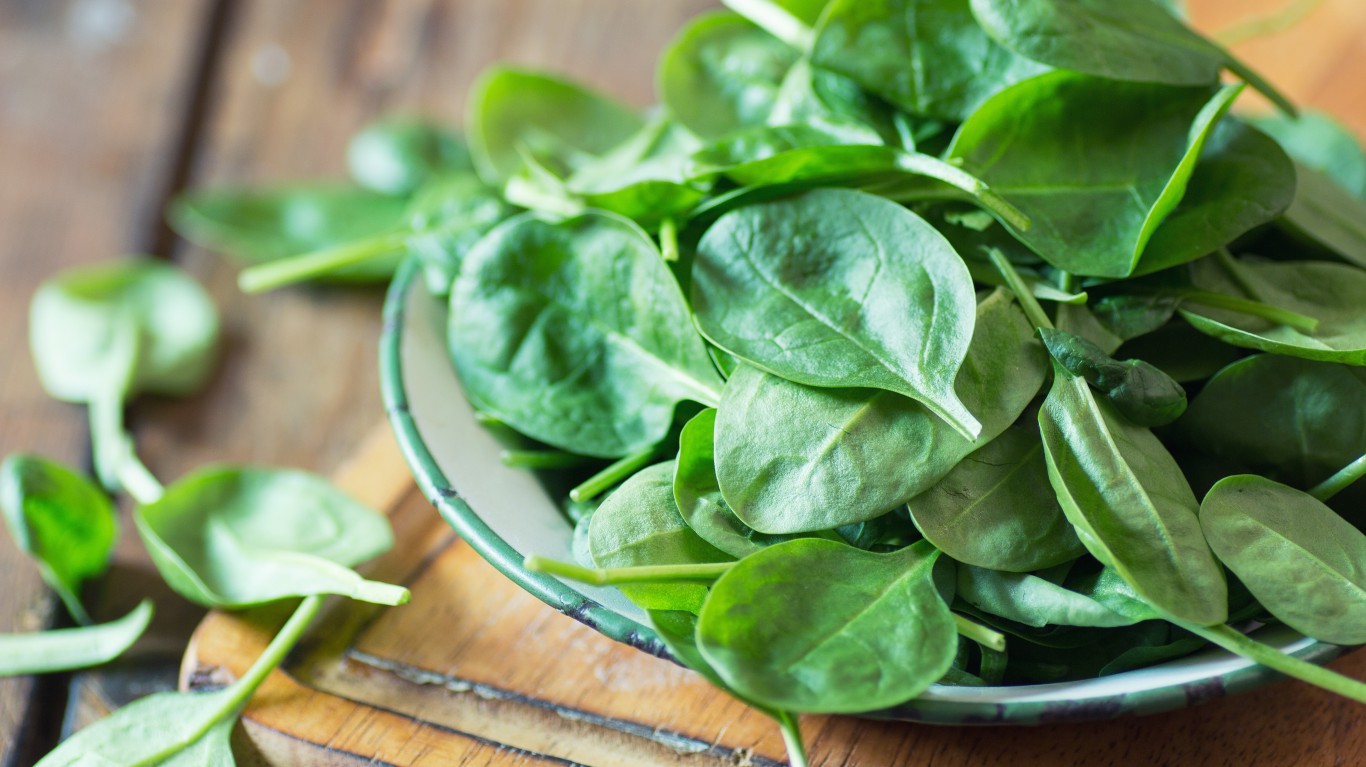
Spinach
> Price: $1.06/bunch
The first nutrient in spinach that anyone familiar with the cartoon character Popeye will name is iron — but in fact its reputation as a high-iron food may stem from a decimal error made by a German scientist back in 1870, and in any case the iron spinach does contain is not well-absorbed. The good news is that it contains plenty of calcium, magnesium, potassium, and Vitamin A. Among its possible (though not proven) health benefits are diabetes control, asthma prevention, bone health, and digestive regularity.
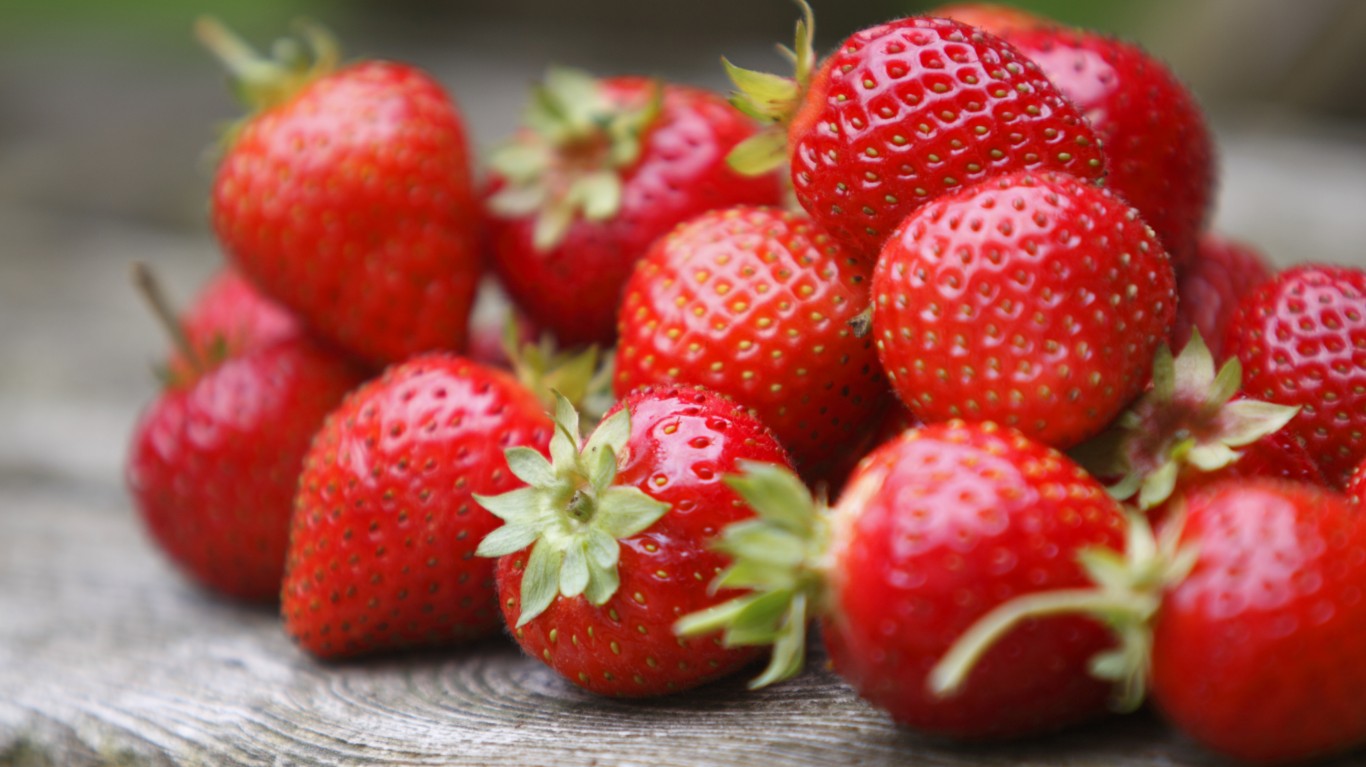
Strawberries
> Price: $2.82/lb.
Various studies have suggested that these sweet spring and summer berries may slow cognitive decline in the elderly, help bring symptomatic relief to sufferers from ulcerative colitis and Crohn’s disease, and reduce the risk of cardiovascular disease. They’re high in fiber, Vitamin C, and manganese, and are one of the top 20 fruits in antioxidant capacity.
[in-text-ad]
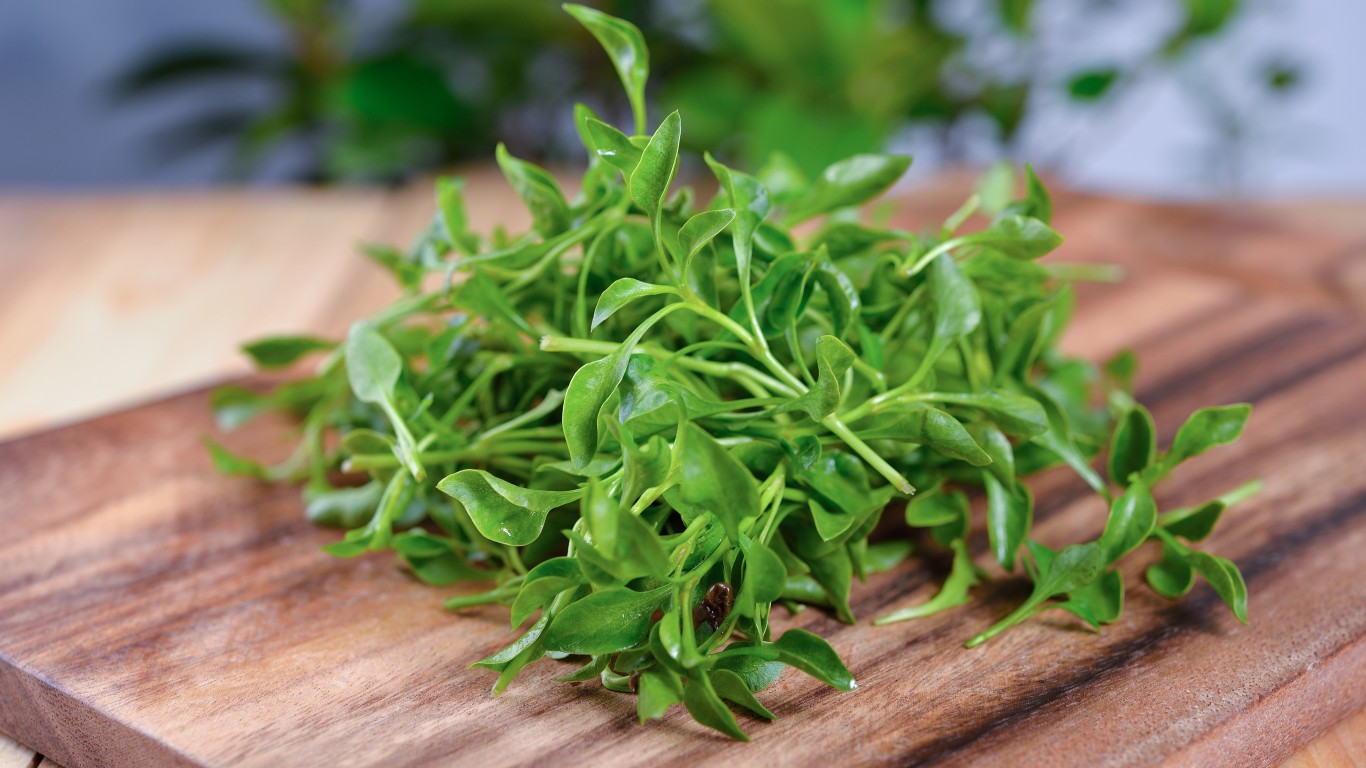
Watercress
> Price: $1.69/bunch
Often relegated to the role of garnish, this peppery, leafy green — related to kale — is delicious in salads, soups, and sandwiches. It is a nutritional powerhouse, with more than the RDA for Vitamin K in a one-cup serving, along with plenty of Vitamins A and C, some calcium and manganese, and more than 40 unique flavonoids — a kind of antioxidant. Compounds it contains may help fight certain types of cancer, lower cholesterol, boost immune function, improve eye health, and protect against osteoporosis, and improve heart health. Read about 28 dangerous things experts link to heart disease.
Credit card companies are handing out rewards and benefits to win the best customers. A good cash back card can be worth thousands of dollars a year in free money, not to mention other perks like travel, insurance, and access to fancy lounges. See our top picks for the best credit cards today. You won’t want to miss some of these offers.
Flywheel Publishing has partnered with CardRatings for our coverage of credit card products. Flywheel Publishing and CardRatings may receive a commission from card issuers.
Thank you for reading! Have some feedback for us?
Contact the 24/7 Wall St. editorial team.
 24/7 Wall St.
24/7 Wall St.


